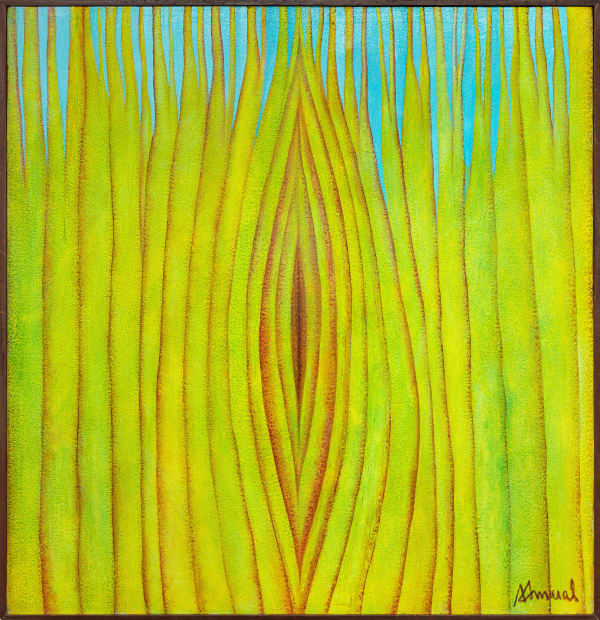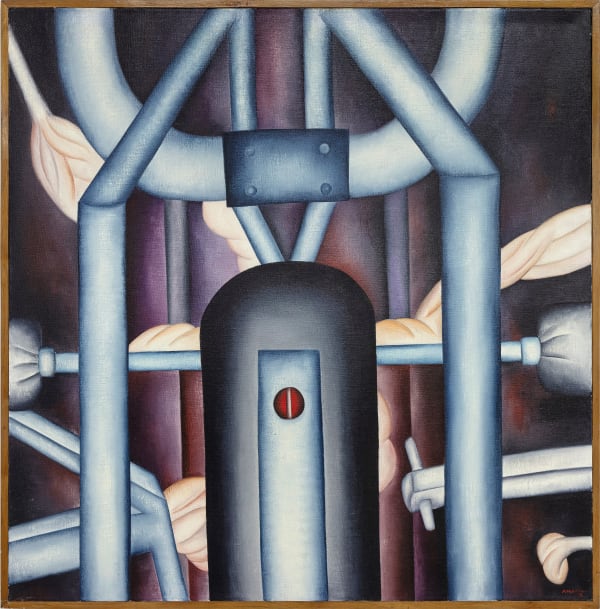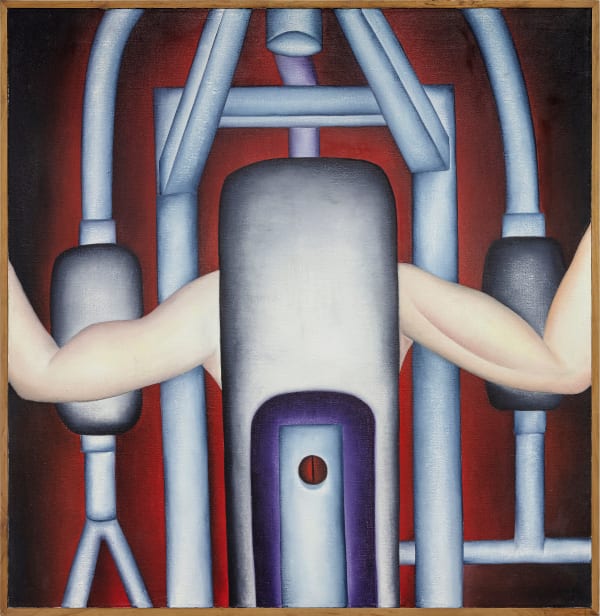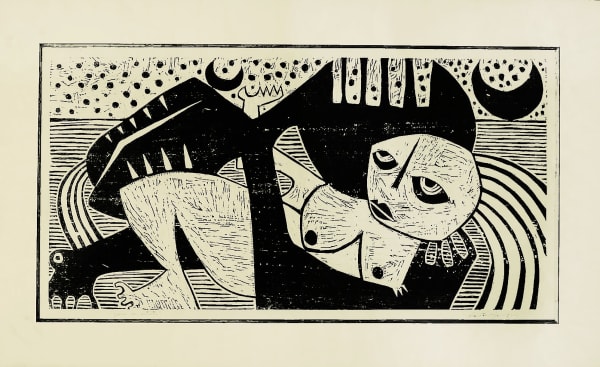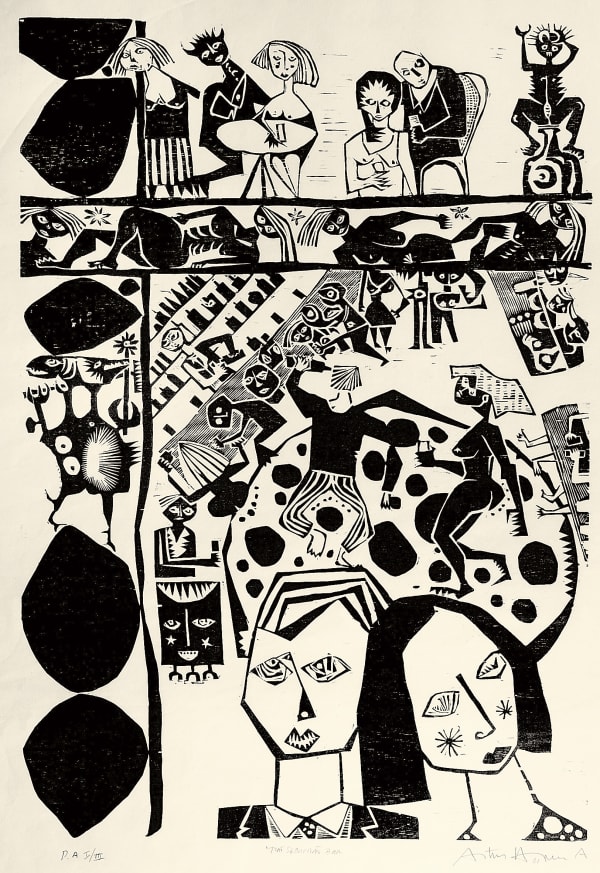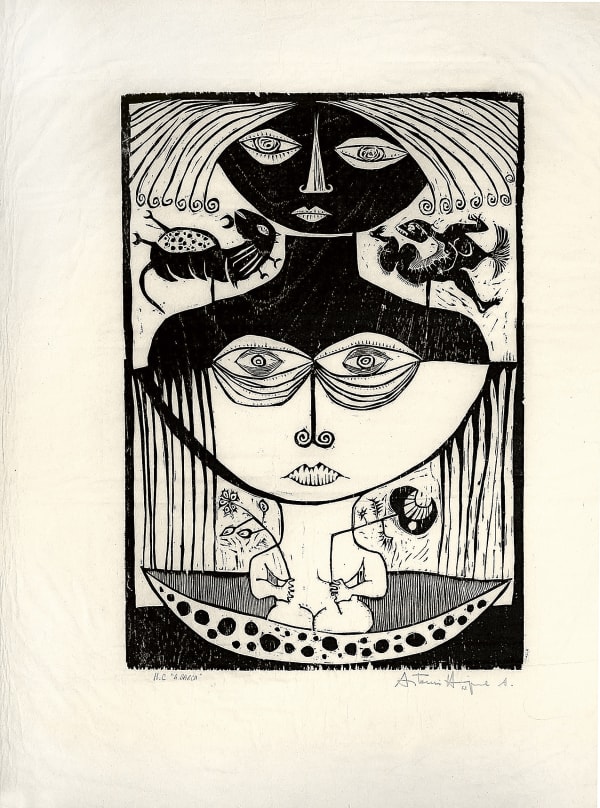-
CASA TRIÂNGULO IS PLEASED TO PRESENT ANTONIO HENRIQUE AMARAL: INSIDE OUT, FIRST EXHIBITION DEDICATED TO THE ARTIST AT THE GALLERY. THE EXHIBITION IS CURATED BY RAPHAEL FONSECA AND POLLYANA QUINTELLA.
MULTIPLE AND POLYPHONIC, ANTONIO HENRIQUE AMARAL STROVE TO CONSTRUCT AN OEUVRE THAT WOULD DEFY UNIVOCAL INTERPRETATIONS. HIS MORE THAN SIX DECADES OF PRODUCTION RESULTED IN A MULTIFACETED PATH THAT HAS BEEN THE SUBJECT OF RECENT REVISIONS BY ESSAYS AND MONOGRAPHIC EXHIBITIONS THAT SITUATE THE ARTIST BEYOND THE WORKS OF HIS ICONIC AND EMBLEMATIC BANANAS SERIES, EXECUTED BETWEEN 1968 AND 1975.
-
This exhibition is a further step toward establishing an innovative view of the artist’s production, with the aim of contextualizing works centered on the body and its wide variety of negotiations. From the 1950s and 1960s, we see works in drawing and printmaking – fundamental in Amaral’s coming to be as an artist – which present deformed and transfigured anthropomorphic figures, tensioning the parameters of representation in the search for more expressive, fantastic and delirious gestures. His human figures appear in an increasingly molten form, as though they were about to melt away under our gaze. In the 1950s, he was constantly experimenting with the metamorphosis between a human body and an animal one, bordering on the unnamable – which is what we conventionally call “monstrous.” While in his drawings we become aware of the importance of isolated applications of color in his research, in his printmaking we see the artist experiment with different sizes and manners of appropriating the grain in the wooden printing blocks.
-
-
-
-
 Untitled, 1959
Untitled, 1959 -
At the center of the largest room of Casa Triângulo, hanging from the ceiling, we are presenting various series of paintings produced between the 1970s and the 1990s, in which AMARAL takes a look at the human body, though in a more iconic way. Produced in the late 1970s, precisely in 1979, the series of paintings Máquinas [Machines], manifests the fusion of machines and bodies, metals and viscera, in order to question the borders between nature and culture and to spur us to recognize the body permeated by the technological dimension. The motion of these machines – which curiously resemble the weightlifting devices that became popular precisely in the 1970s – depends on a repetitive effort from the human body. It is difficult to observe this series of images and not sense the relationship with the most repressive years of the military dictatorship in Brazil. Torture machines or machines for disciplining the body? Is there any way to separate the two possibilities?
-
 Torsos IX, 1995
Torsos IX, 1995 -
 FIM DE JOGO...?, 1995
FIM DE JOGO...?, 1995 -
-
-
-
 O mundo mágico do acrobata, 1963
O mundo mágico do acrobata, 1963 -
-
 O salvador, 1966
O salvador, 1966 -
 Homem na escrivaninha acendendo cachimbo, 1966
Homem na escrivaninha acendendo cachimbo, 1966 -
 Boca, 1966
Boca, 1966 -
 Pressões, repressões, 1976
Pressões, repressões, 1976 -

-
AS A RESPONSE TO THE MILITARY COUP OCCURRED IN BRAZIL IN 1964, AMARAL STARTED TO DEVELOP EXPLICITLY A POLITICAL WORK WITH A SATIRICAL TASTE, INCLUDING ELEMENTS OF POPULAR AND MASS CULTURES, IN WHICH HIS SET OF WOODCUTS, ENTITLED O MEU E O SEU (1967) WAS HIGHLIGHTED AT MIRANTE DAS ARTES (SÃO PAULO), GALLERY IN WHICH PIETRO MARIA BARDI WAS PARTNER. THE PERIOD ALSO MARKED THE BEGINNING OF HIS PAINTING WORK, HAVING BEEN CARRIED OUT BETWEEN 1968 AND 1975 HIS EMBLEMATIC SEQUENCE OF CANVAS THAT PROBLEMATIZE THE MOTIF OF BANANAS AS A NATIONAL SYMBOL. AT SALÃO DE ARTE MODERNA DO RIO DE JANEIRO IN 1971, HE WAS AWARDED WITH A TRAVEL TO ABROAD AND WENT TO NEW YORK, FROM WHERE HE RETURNED TO BRAZIL IN 1981. ANOTHER HIGHLIGHT OF HIS TRAJECTORY IS THE PAINTED WALL ENTITLED SÃO PAULO – BRASIL: CRIAÇÃO, EXPANSÃO E DESENVOLVIMENTO (1989), INSTALLED IN THE MAIN HALL OF PALÁCIO DOS BANDEIRANTES - THE STATE OF SÃO PAULO GOVERNMENT HEADQUARTERS, RESULT OF A CONTEST.
OVER THE COURSE OF MORE THAN SIX DECADES OF ARTISTIC TRAJECTORY, AMARAL HAS PRESENTED HIS WORK IN SEVERAL INDIVIDUAL AND GROUP EXHIBITIONS BOTH IN BRAZIL AND IN COUNTRIES OF LATIN AMERICA, NORTH AMERICA, EUROPE AND ASIA.
HIS WORKS ARE PART OF SEVERAL IMPORTANT PUBLIC COLLECTIONS IN BRAZIL AND ABROAD, SUCH AS: THE METROPOLITAN MUSEUM OF ART (THE MET), NEW YORK, NY, USA; BLANTON MUSEUM OF ART, AUSTIN, TEXAS, USA; ART MUSEUM OF THE AMERICAS (AMA), WASHINGTON, D.C., EUA; CASA DE LAS AMÉRICAS, HAVANA, CUBA; INSTITUTO DE ARTE LATINOAMERICANO (IAL), SANTIAGO, CHILE; LATIN AMERICAN ART COLLECTION, ESSEX UNIVERSITY, ESSEX, ENGLAND; MUSEO DE ARTE AMERICANO DE MALDONADO (MAM), MALDONADO, URUGUAY; MUSEO DE ARTE MODERNO DE MEXICO (MAMM), MEXICO CITY, MEXICO; COLLECCION FEMSA, MONTERREY, MEXICO; MUSEO DE ARTE MODERNO DE BOGOTA (MAMBO), BOGOTA, COLOMBIA; MUSEO NACIONAL DE ARTE (MNA), LA PAZ, BOLIVIA; MUSEU DE ARTE CONTEMPORÂNEA DA UNIVERSIDADE DE SÃO PAULO (MAC-USP), SÃO PAULO; MUSEU DE ARTE MODERNA DE SÃO PAULO (MAM-SP), SÃO PAULO; MUSEU DE ARTE DE SÃO PAULO (MASP), SÃO PAULO; MUSEU DE ARTE MODERNA DO RIO DE JANEIRO (MAM-RJ), RIO DE JANEIRO AND PINACOTECA DO ESTADO DE SÃO PAULO, SÃO PAULO.
HIS WORK HAS BEEN EXTENSIVELY DISCUSSED BY BRAZILIAN AND INTERNATIONAL CRITICS AND CURATORS, SUCH AS RAPHAEL FONSECA, POLLYANA QUINTELLA, PAULO MIYADA, ARACY AMARAL, JACQUELINE BARNITZ, DAMIÁN BAYÓN, SHEILA LEIRNER, GERALDO FERRAZ, VILÉM FLUSSER, BENJAMIN FORGEY, CARREIRA GOLDMAN, SHIRREIRA GOLDMAN, FREDERICO MORAIS, ROBERTO PONTUAL, BÉLGICA RODRÍGUEZ AND EDWARD J. SULLIVAN.


